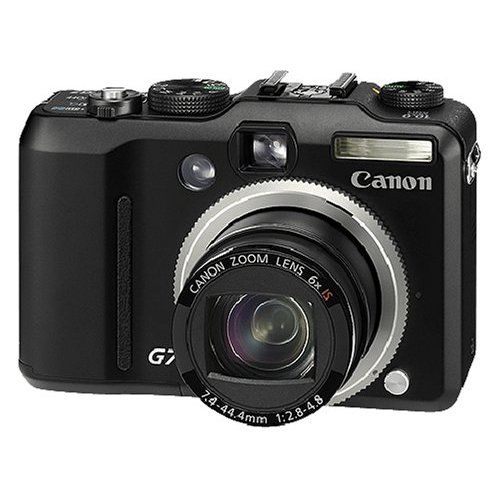The G-series of Canon compacts marked themselves from the crowd of other high-end models by providing a near professional level of specification in a (some would say) “bulky” but robustly built package. Well the latest in the lineage, the G7 fulfills only the last of those facets.
The G7 is extremely well built. The 2.5-inch screen on this model is bigger, very good, viewable in most lighting and at oblique angles, but gone is the camera's trademark swivel LCD screen.
The camera's main features include a 10-megapixel sensor, a 6x optical zoom lens, ISO 1600 top sensitivity for low light work without flash and optical image stabilisation. You also get 25 shooting modes including a full suite of manual shooting modes and two custom settings and a hot shoe for use of accessory flash units.
A couple of disappointments are immediately apparent however, and the first is the new lens while the use of that 10-megapixel sensor (the G6 used a 7-megapixel sensor) has meant that Canon keeps up with the current 10-megapixel competition but falls foul of the same image noise problems.
In terms of handling, the new, smaller body lacks the large sculpted grip of its predecessors plumping for a flatter design. The optical viewfinder is okay but even with its dioptre, adjustment remains blurry to use at all focal lengths. A small lens zoom rocker switch joins this ensemble with central shutter release.
However, the (pressure) gap on the shutter button between a half press to focus and a full press to shoot is too close and I frequently found I had snapped a shot rather than got the camera ready to take a shoot. This frustration aside handling is otherwise very good.
The large screen means most controls on the smaller bodies back plate have been squeezed over to one side and while they’re clear and easy to use, if you want to snap single handed shots, there’s nowhere to rest your thumb without it falling onto one of the back plate controls.
The comprehensive set of features means the camera takes a while to get used to where everything is and how it works. But here again there’s another omission…
A cornerstone of most enthusiasts shooting options – and including mine – has been removed from this new camera; the G7 lacks a RAW capture mode.
RAW capture can really save the day on some over or underexposed shots when things don’t go to plan, you can tweak later in RAW. Not any more. This combined with the lens change (it’s smaller maximum aperture) and the densely packed sensor almost completely removes the G-series raison d’etre.
Image quality is, overall, good rather than great. A closest focus point in macro mode of 1cm provides excellent close up capability and although the apertures available are more restricting on the new lens, distortion (both barrel and pin cushion) are well controlled.
I had a few exposure issues in overcast conditions where it kept wanting to overexposure, so manually controlling the camera becomes more important but also makes it less of a snapper, you need to tweak it more to stop highlights washing out for example.
The image stabilisation provides up to a three stop equivalence in terms of hand holdablity, but I still got lots of shots with camera shake as I endeavored to get flash-free images at lower ISOs.
Our quick take
It’s fair to say the Canon PowerShot G7 is a comprehensively specified and brilliantly built camera, but it is also fair to say it is a disappointment.
All the reasons to own a G-series camera (excellent, fast lens, RAW capture, reams of detail and low noise) have been removed by a company trying to keep up with the 10-megapixel “Joneses”.
Canon’s premium compact series of digital models has lost its crown.

Canon Powershot G7 digital camera - 4.0 / 5
| FOR | AGAINST |
|---|---|
|
|
To recap
A mixed experience means that Canon's flagship might well have lost it's crown
